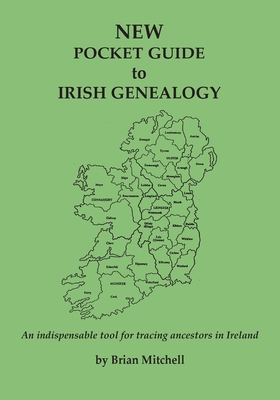Book Review: “New Pocket Guide to Irish Genealogy”
Being the owner of the Second Edition of the “Pocket Guide to Irish Genealogy” (2002), I was glad to review this all-new, revised and expanded version of the book. Irish genealogy can be challenging, and Ireland’s history has had an impact on researching Irish ancestors.
As in previous editions, the book contains a concise outline of the history of Ireland and how it applies to genealogical research. The book contains the maps, as well as definitions of geographical and administrative areas that you will need to know while researching Irish ancestors.
If your ancestors emigrated from Ireland, your research needs to begin at home. The book gives brief insights into how to start in Australia, New Zealand, the United States, Canada and Great Britain.
The author asserts that using seven (7) major record sources, a researcher should be able to go six or seven generations back in their family tree in Ireland. This distance may be impeded when ancestors in the same place have the same or similar names, or the records may not exist. A beginning researcher would benefit from learning of these sources; an intermediate researcher is probably aware of them, but might benefit from knowing more details about how to access and use them. There are also a variety of other records, some of them potentially less obvious, that are introduced and may prove useful for placing an Irish ancestor at a place during a certain time.
The “Pocket Guide to Irish Genealogy” was originally published in 1991, revised in 2002 and revised again in 2008. This new 2020 edition is expanded from previous editions, and Irish researchers may find it worth the investment to upgrade to the 2020 edition.
This 2020 edition represents a major effort to include the ever-growing number of resources that have become accessible online. Although the Second Edition did have a chapter about “Irish Genealogy and the Internet,” this new edition contains more timely and relevant information. A new section that organizes “Insights and Strategies” includes expanded and new content. There is a three-step guide to tracing your Irish ancestors, which is followed by a case study demonstrating how to employ the steps. In the new content includes a brief chapter about when and how to DNA. Identifying genetic cousins and collaborating with them to pool records and held family is definitely a way to pool
The book includes specific details and expands on how to use the strategies with ample examples. Included in the examples, the author embeds a demonstration of how to extract data from the available records, which readers might find helpful to organize the data they collect during their research. The case study of a Scots-Irish ancestor may be especially helpful if this is an area of your research.
This book is dense with usable information, and it may take a while to digest. A researcher might choose to work through this book as an instructive text. A researcher could benefit from taking the time to read through the book slowly, focusing on a record set or strategy, and then applying what was read to their own research. This approach could be more useful than sitting down and reading the book from cover-to-cover. The book can also serve as a reference for a researcher building a family tree.
The term “pocket guide” is a bit of a misnomer; you would need large pockets to carry this book around with you! Cosmetically, I found the font in this latest version was easier on my eyes than that of the Second Edition.
Mitchell’s work to revise and update this book was worth the amount of work he so obviously invested. With its updated and relevant content, it is worth considering upgrading to the 2020 edition in your genealogical library.
“New Pocket Guide to Irish Genealogy” by Brian Mitchell is available at Genealogical.com.




